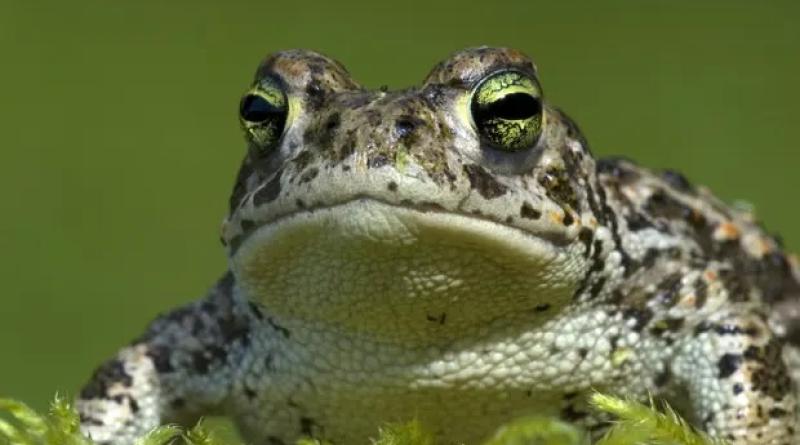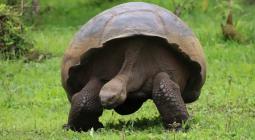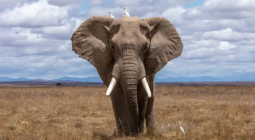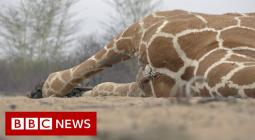UK wildlife ‘devastated by litany of weather extremes’ in 2022

National Trust’s annual audit reveals a dire year for animals from toads and bats to birds and butterflies
This year’s tumultuous weather – including fierce storms, searing heat and deep cold snaps – has devastated some of the UK’s most precious flora and fauna, a leading conservation charity has said.
The extreme conditions have made survival very difficult for animals from toads and bats to birds and butterflies, and from great trees to meadowland flowers.
The National Trust, which produces an annual Christmas audit of how the year’s weather has affected nature, said the climate emergency meant that what in 2002 felt like extreme events were going to become the new norm, creating major challenges for many species.
The charity’s climate crisis adviser, Keith Jones, said: “This year’s weather has been challenging for nature. Drought, high temperatures, back-to-back storms, unseasonal heat, a cold snap and floods means nature, like us, is having to cope with a new litany of weather extremes.
“It is a stark illustration of the sort of difficulties many of our species will face if we don’t do more to mitigate rising temperatures and help nature’s survival.
“Weather experts predict that the future will see more torrential downpours, along with very dry and hot summers. We’re going to experience more floods, droughts, heatwaves, extreme storms and wildfires – and they will go from bad to worse, breaking records with ever alarming frequency if we don’t limit our carbon emissions.”
One of the most obvious results of the hot summer were wildfires that devastated heathland areas in Cornwall, Devon and Dorset, destroying habitats for species such as the silver-studded blue butterfly, rare sand lizards and smooth snakes.
The heat also had other unexpected consequences. At the height of summer, rangers in Wallington, Northumberland, found young bats dehydrated and disoriented. They rehydrated the bats using tiny pipettes before placing them in a cooler, dark place where they could rest and recover and fly to rejoin their colony at dusk.
The drought was terrible news for natterjack toads, which need clusters of pools to travel across dune slacks. The ponds at Formby in Merseyside dried up and no toadlets were spotted.
The shorter flowering season caused by the drought also affected pollinators. Many butterfly species had a poor year as a result of depleted food sources over their peak summer period.
Numbers of the black darter, the UK’s smallest resident dragonfly, have been dropping for half a century, but experts were shocked that none were spotted at one of its strongholds, Black Down in the South Downs national park, this year. The fear is that the summer was too dry for the black darter larvae to survive.
Swifts returned to the east coast of England later than usual and in lower numbers, and those that did return had low breeding success, most likely because of the scarcity of flying insects, especially aphids, whose numbers were down because of the heat.
It was an awful June for the tern colonies on Strangford Lough in Northern Ireland when south-easterly gales, tidal surges and periods of torrential rain washed away nests.
The sandwich terns at Blakeney in north Norfolk also had a bad year. Only one pair nested, compared with more than 3,000 in 2021, possibly because the mild winter had boosted numbers of rats.
There were some winners. The lack of late frosts in the spring led to a decent apple harvest, and it has been a “mast year” – an excellent one – for some nuts and berries, but even this is thought to be partly the result of the stress caused to trees by the drought conditions.
It has also been a good year for the chough, a symbol of Cornwall, with the population swelling to about 200 birds.
Ben McCarthy, the National Trust’s head of nature conservation, said an alarm had been sounded: “Some habitats like wetlands and grasslands completely dried out in some areas, impacting all those species that make them their home.
“Many species suffered, with notable reductions in the number of flying insects such as butterflies and bumblebees as flowering plants withered and died.”
He said some species would adapt better than others. “Wildlife that utilise a broad range of habitats, so called generalist species, such as robins, wood pigeons or common blue butterflies that we may see in our gardens, are better able to respond to the pressures of extreme weather as there is more space to support them.
“However, those species that have more demanding requirements are especially vulnerable as they are typically more restricted by specific needs. For example cirl buntings, a farmland bird, which require seeds in the winter and invertebrates in the summer, or marsh fritillary butterflies, which require wet grasslands with good populations of plants like devil’s-bit scabious that the caterpillars feed on.
These are the species which currently face the biggest challenges and need our help to join up habitats and to make landscapes more resilient to change.”
cover photo: Pool clusters that natterjack toads need to travel across dune slacks dried up at Formby on Merseyside and no toadlets were spotted. Photograph: Do Van Dijck/Natural England/PA





